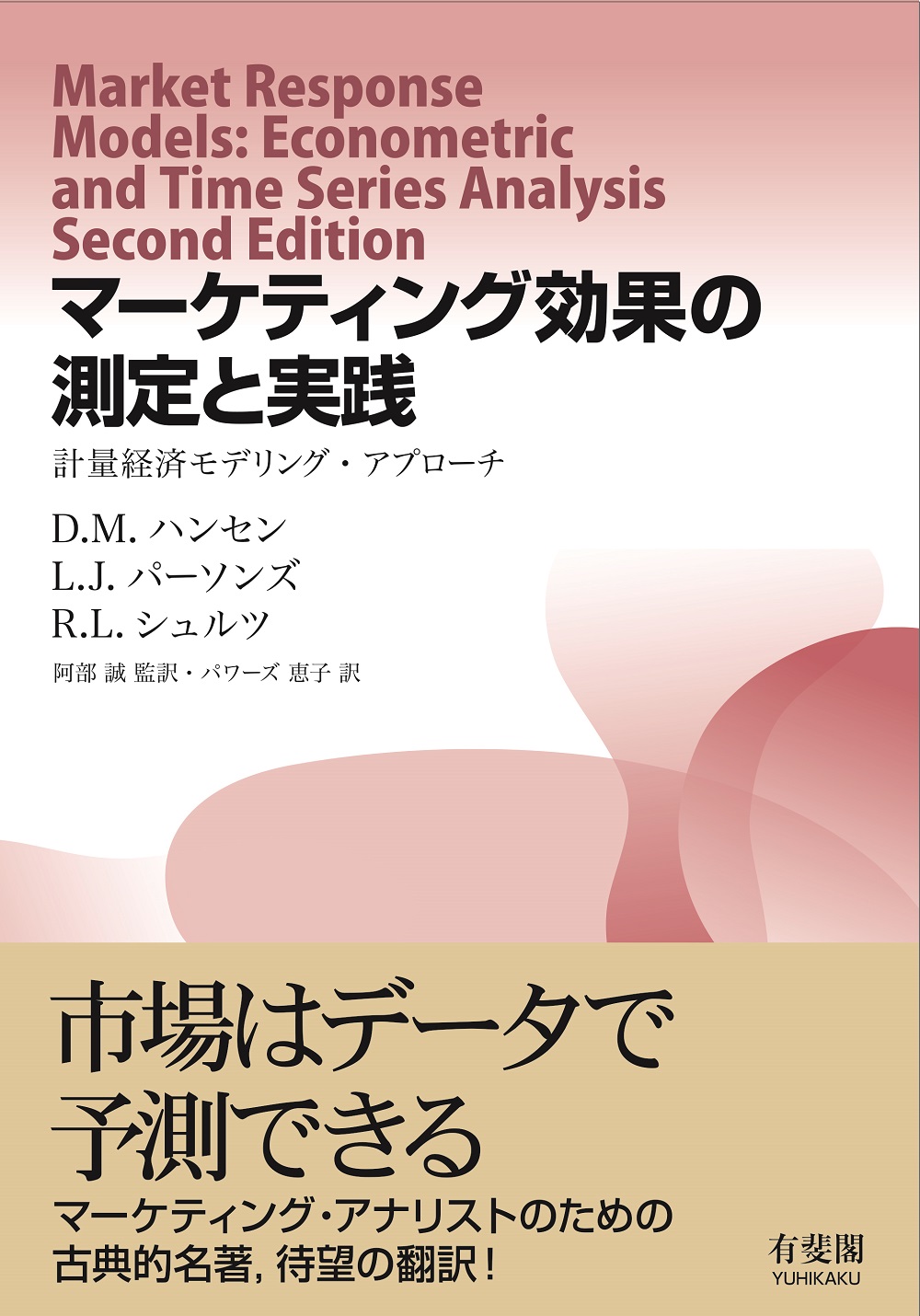
Title
Marketing koka no Sokutei to Jissen (Market Response Models: Econometric and Time Series Analysis, Second Edition)
Size
484 pages, A5 format, softcover
Language
Japanese
Released
August, 2018
ISBN
978-4-641-16520-5
Published by
Yuhikaku Publishing
Book Info
See Book Availability at Library
In today's business environment, and considering IT advancement, it is extremely risky to make decisions based merely on intuition and experience given the various complicated circumstances and factors and their temporal fluctuations, increased uncertainty, increased competition with greater sophistication, and the need for accountability to investors. Objective data-based assessments and decision-making are essential to manage business metrics such as market share, sales, and profit, along with customer and brand assets from both the short- and long-term perspectives. In the field of marketing, a large amount of data was produced through experimental data on advertisement exposure reflected in behavior scans in the mid-1970s, scan panel data in the late 1970s (purchasing history by household), and single-source data in the 1980s (purchase history within the same household and its exposure to television advertisements over time); thus, the information revolution in marketing began nearly 30 years before the phrase "big data" was even coined.
For a long time, economists have mathematically analyzed the relationship between "demand" and "price." However, besides price, there are other variables that are manipulated by companies, ranging from advertising, sales organizations, and distribution, to sales promotions. The role of marketing scientists is crucial for applying economic expertise to actual data and using it for real decision-making. Against this backdrop, this book spans a quarter of a century up to the early 21st century (2001) and systematically organizes empirical research and its business applications in the marketing discipline of econometric time-series analyses. The target readers are marketing researchers and practitioners, with this book providing a logical analysis framework that can be implemented by any kind of marketing organization in planning, forecasting, and decision-making.
Part I lays the foundation of the fundamental concept of market responsemodels in marketing (Chapter 1) and the relationship between markets and data (variables, aggregation) (Chapter 2). Part II deals with static response models in which the mean and variance of the variables are fixed. Static modeling, which deals with cross-sectional data and explains function types and heterogeneity (Chapter 3), and dynamic modeling, which deals with time-series data and focuses on the lag effect of variables across time points (Chapter 4), are introduced, along with parameter estimation and model testing (Chapter 5). Part III deals with dynamic response models in which the mean and variance of the variables fluctuate. As for the analysis of a single time series, after explaining how to recognize patterns within a time series, a diagnosis of whether the market is evolving is introduced (Chapter 6). Then, this is extended to a multivariate setting to infer variable equilibrium and causal relationships (Chapter 7). Part IV provides insights on empirical generalizations of marketing phenomena obtained by applying market response models (Chapter 8), and introduces decision-making optimization and forecasting using market response models (Chapter 9).
Published in 1990 (Hanssens, Parsons, and Schultz, 1990), the first 380-page edition evolved over the subsequent 12 years into a second edition consisting of over 500 pages (this book), in the process undergoing major changes in its organization. The reference section itself extends over 54 pages, with more than 1000 papers being referenced. There is no doubt that the content of this book is dense, but after many years of use of the first edition, it has been further refined in quality.
(Written by ABE Makoto, Professor, Graduate School of Economics / 2019)
Related Info
Professor at the Graduate School of Economics, Faculty of Economics, University of Tokyo. After obtaining a Ph.D. from the Massachusetts Institute of Technology (MIT) in 1991, he became an assistant professor at the University of Illinois that same year. In 1998, he began working as an associate professor at the University of Tokyo’s Faculty of Economics and went on to become a professor there in 2004. He has published many papers in both English and Japanese marketing journals, including co-authorships with winners of the Nobel Prize in Economics. In 2003, he was selected as the leading marketing researcher from among the universities in the Asia-Pacific region by the Journal of Marketing Education. His best-known book are “Todai-Kyoju ga oshieru yabai marketing (The Tricks of Effective Marketing Tactics)"(KADOKAWA), "Learn Four Years of University-Level Marketing in Just 10 Hours" (KADOKAWA), and he co-authored "[New Edition] Introduction to Marketing Science - Market-Aware Scientific Management" (Yuuhikaku).



 Find a book
Find a book





